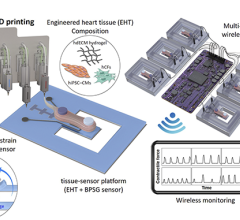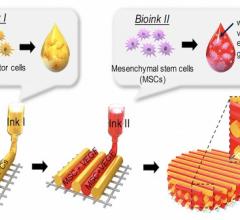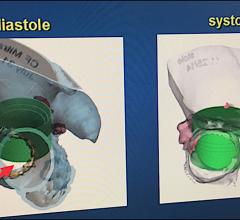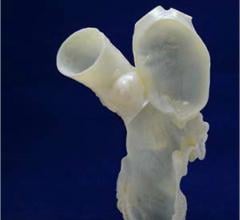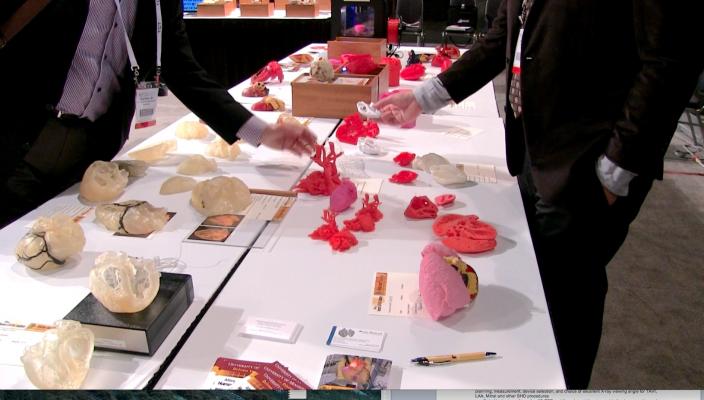
January 3, 2018 — The U.S. Food and Drug Administration (FDA) issued the final version of the guidance, “Technical Considerations for Additive Manufactured Medical Devices." Additive manufacturing (AM), the broad category of manufacturing encompassing three-dimensional (3-D) printing, is an emerging technology. This guidance is not intended to introduce new policy, but rather outlines the Agency’s current thinking about the technical aspects associated with AM processes, and provides manufacturers with recommendations for device design, manufacturing and testing considerations for use when developing devices that include at least one additively manufactured component or additively fabricated step.
In medical device applications, AM has the advantage of facilitating the creation of anatomically-matched devices and surgical instrumentation by using a patient's own medical imaging data. Another advantage is the ease in fabricating complex geometric structures, allowing the creation of engineered open lattice structures, tortuous internal channels and internal support structures that would not be easily possible using traditional (non-additive) manufacturing approaches. However, the unique aspects of the AM process, such as the layer-by-layer fabrication process, combined with the relative lack of experience and clinical history with respect to devices manufactured using AM techniques, pose challenges in determining optimal characterization and assessment methods for the final finished device, as well as optimal process validation and verification methods for these devices. For devices manufactured using AM, the recommendations in this guidance supplement any device-specific recommendations outlined in existing guidance documents or applicable FDA-recognized consensus standards.
On Jan. 10, 2018, the FDA will hold a webinar from 1:00-2:30 p.m. Eastern Time for industry to review the “Technical Considerations for Additive Manufactured Medical Devices” guidance document and answer questions. No registration is required.
FDA Commissioner Scott Gottlieb, M.D., said, “Today we are issuing new guidance to help advise device manufacturers on technical aspects of 3-D printing, referred to as additive manufacturing, that clarifies what the FDA recommends manufacturers include on submissions for 3-D-printed medical devices. It includes our thinking on various approaches to 3-D printing, including device design, testing of products for function and durability, and quality system requirements. Overall, it will help manufacturers bring their innovations to market more efficiently by providing a transparent process for future submissions and making sure our regulatory approach is properly tailored to the unique opportunities and challenges posed by this promising new technology.”
Gottlieb continued, “But this technical guidance — categorized as a “leap-frog” guidance because it helps bridge where we are today with innovations of tomorrow — is only intended to provide the FDA’s initial thoughts on an emerging technology with the understanding that our recommendations are likely to evolve as the technology develops in unexpected ways. We are already seeing the beginning of this evolution as hospitals and academic centers use their own 3-D printers to create innovative dental implants, replacement knee joints, and experimental heart valves and bone implants for use in clinical studies. An increasing number of surgeons across the country have been saving infants born with a life-threatening breathing condition by creating patient-matched 3-D-printed splints to install in their patients’ tiny airways, which expand and degrade as the babies grow.
“In order to help ensure the safety and effectiveness of these products, we’re working to establish a regulatory framework for how we plan to apply existing laws and regulations that govern device manufacturing to non-traditional manufacturers like medical facilities and academic institutions that create 3-D-printed personalized devices for specific patients they are treating. Developing a transparent policy on 3-D printing remains an important next step for us, and we plan to explore the role of nontraditional manufacturing facilities like a hospital operating room or university laboratory,” Gottlieb concluded.
The FDA also plans to review the regulatory issues related to the bioprinting of biological, cellular and tissue-based products in order to determine whether additional guidance is needed beyond the recently released regulatory framework on regenerative medicine medical products.The Center for Biologics Evaluation and Research has recently interacted with more than a half-dozen manufacturers who have expressed interest in using 3D printing in some capacity to produce their medical products.
Related 3-D Printing Content:
The Future of 3-D Printing in Medicine
VIDEO: Applications in Cardiology for 3-D Printing and Computer Aided Design
The Use of 3-D Printing in Cardiology
For more information: www.fda.gov


 October 21, 2024
October 21, 2024 

